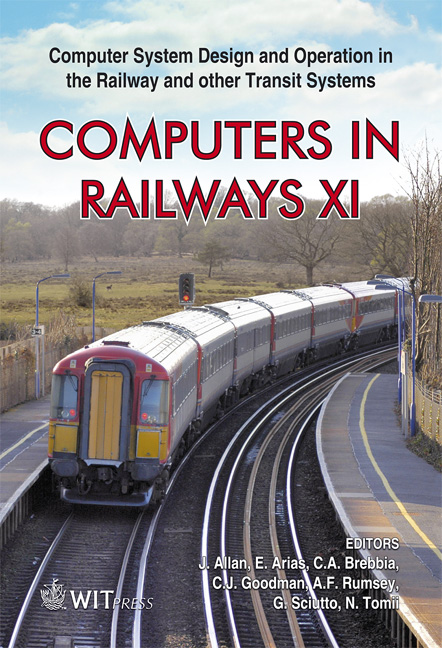A New Tool For Railway Planning And Line Management
Price
Free (open access)
Transaction
Volume
103
Pages
9
Page Range
263 - 271
Published
2008
Size
476 kb
Paper DOI
10.2495/CR080271
Copyright
WIT Press
Author(s)
J. Garzón Núñez, J. de D. Sanz Bobi, J. Gómez Ramírez & J. Cano Nogueras
Abstract
Nowadays a trend focused on developing new tools in order to ease the decision making process in traffic central post facilities is clearly demanded by railway administrations. Also, hardware and software technical improvement allows new and more complex control and planning systems to be developed. In this paper a new tool developed for railway planning and traffic regulation is presented. Intelligent planning and traffic regulation is carried out with the help of a simulation tool that provides very valuable information to the planning and regulating tools of the way the railway line will react to the control orders. This simulator gives information of both mechanical and electrical behaviour of the system so electrical consumption can be taken into consideration in order to obtain an operational plan. The way the line planning is carried out can be described this way: First, planning tool gets the operator inputs to the tool that are mainly the starting position of the train units in the line, the interval between circulations throughout the day or the departure time of the train. Then the planning tool calculates the optimal theoretical schedule and the routing list for each station in the line according to the inputs, conditions and restrictions of the line. This theoretical planning is tested using the simulator and if it fulfils line operational requirements is stored as a valid plan. Finally, a traffic regulation tool is in charge of executing the theoretical plan. This tool compares the theoretical plan with the result of the operation of the railway line, calculates the deviation from the theoretical plan (conflict detection) and sends orders to the traffic control system trying to lessen the deviations from the theoretical plan (conflict resolution). If deviations can’t be reduced, a new planning taking into consideration the actual state of the line is obtained in order to operate the line while a degraded situation is taking place. Then, once the degraded situation is overridden, the first theoretical plan is recovered if possible. Keywords: railway planning, decision making, train control, simulation tool.
Keywords
railway planning, decision making, train control, simulation tool.





